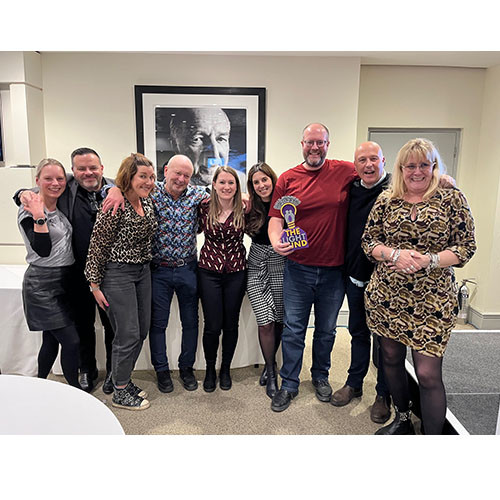Start Licensing’s Ian Downes channels his inner gift shop owner at Top Drawer this week.
If the Ministry of Sound did trade show inspired music collections, I think Top Drawer would be the first one despatched from the pressing plant. Top Drawer is a very chilled out trade show with the mood set when you arrive. Visitors walk through a subtly lit tunnel to enter the show as well chosen music is being played by the show’s resident DJ. It helps put you in a relaxed mood and sets up the trade show day well. But, of course, Top Drawer is a trade show and is about doing business. The show features exhibitors from categories such as giftware, stationery, books, kitchenware, toys and wall art. Each category is carefully curated and it is easy to walk the show.
Most products are pitched at mid to upper tier retail channels with an emphasis on originality, fresh design and on trend products. Top Drawer provides its own trend report for visitors as well reinforcing one of the themes of the show.
It is easy to think that Top Drawer is a licensing free show, but it is actually a show that features some well chosen licences and ranges.
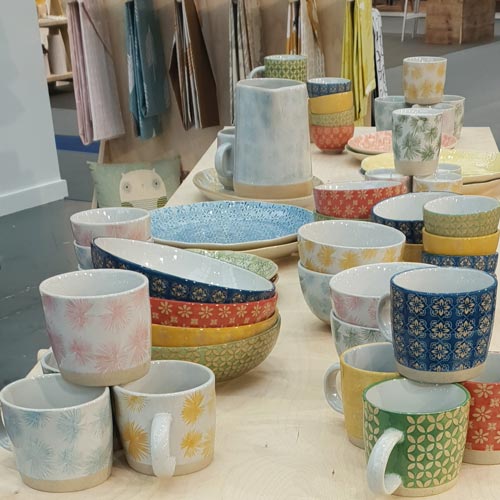
I declare an interest in that one of the big pulls for me this year at Top Drawer was that BlissHome was showcasing its Nadiya Hussain homewares range. Featured prominently on Bliss’ open plan stand, this was the range’s trade show debut. Encouragingly for the range and all concerned Bliss had already taken orders on day one of the show.
This was reassuring and a reminder that trade shows are still a very effective way of connecting with buyers and selling to them. It is clearly tough in retail at the moment, but the buyers who attend Top Drawer seem determined to offer their consumers well chosen products that give consumers a reason to shop with them. Here design, colour choices and being on trend are key factors.
In the case of Nadiya’s range, it is a reminder that a brand or personality can help reassure consumers and act as a signpost to purchase. The appeal of a good licence can inspire consumers to seek out products. But the product has to be good. It was lovely to see BlissHome team in action and having the chance to engage with buyers.
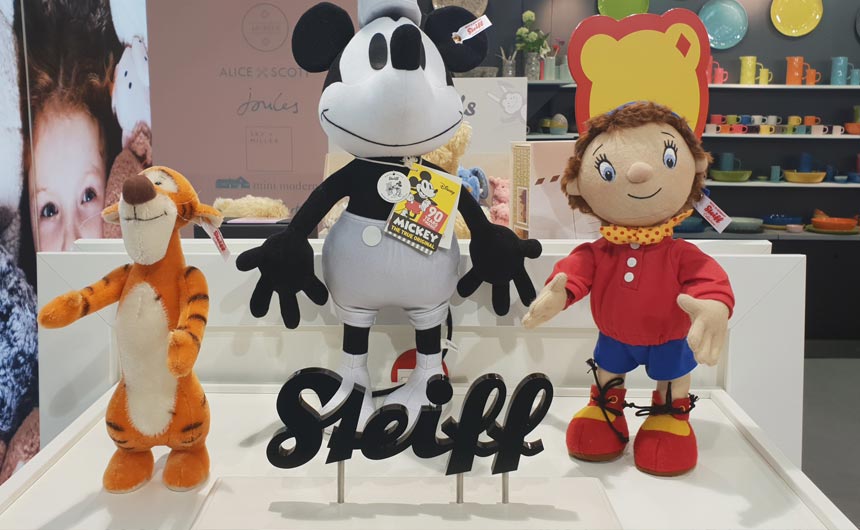
Another licensee that seems to be making good progress and is using licensing in a thoughtful way is Steiff. It blends a curated selection of well chosen classic character licences with its high quality own brand products. Steiff is recognised as a quality manufacturer with a unique proposition. It has fused this well with licences such as Noddy, Tigger and Mickey Mouse. It works anniversaries well and creates limited edition product, but is now developing high spec licensed lines for wider retail distribution. It has mined a particular seam well and used licensing strategically to build the distribution. Steiff is a good case study of how licensing can work well with an established brand and how carefully managed deals can allow a range of licensees to have access to different market sectors in a complementary way.
Likewise, Orange Tree Toys uses classic licences well and has created an offer in the competitive toy space that offers a point of difference and is built on quality. The range of Paddington wooden toys particularly caught my attention and is a good example of the fact that wooden toys are a great category for classic brands with high gift appeal reinforcing traditional play values. I expect these products work in toy retail, but also have strong appeal to independent gift retailers, department stores and book retailers.
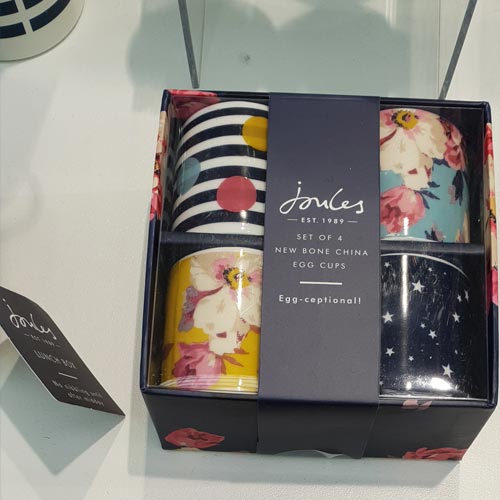
It was also good to see how long-term licensee Portico Designs has evolved its approach to licensing to be more focused and selective with an emphasis on lifestyle type brands. A key feature of its stand was a comprehensive range of paper goods and gift lines based on the Joules brand.
Joules seems to be a retailer and a brand that is growing in popularity and it would seem Portico has chosen well with this brand. It is also a reminder of the growing strength of lifestyle brands in licensing and that retailers can be open to using licensing to gain a foothold outwith their own channels.
Licensing out gives some retailers an extra communication platform. Portico also creates its own designs and brands settling in a position that allows them to enjoy the benefits of a mixed economy. But given its licensing pedigree, it is licensing aware and is able to react to licensing opportunities for its own brands.
It highlighted to me that its own design range Archive is now being licensed out via MGL – this gives Portico the chance to explore more territories internationally and add additional categories to the product offer. I expect to see more licensees adapt and amend their business models in the future as they respond to changes in retail and in turn rights owners have to be aware that licensees do not always fit neatly into one box.
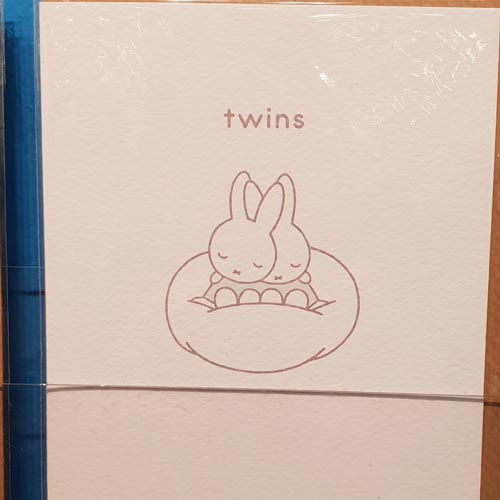
Hype Cards was another longstanding licensee exhibiting at Top Drawer. It has created a successful greeting cards business centred on using pop culture licences ranging from Morph to the Moomins and The Beano to The Beatles. It has a recognisable house style. However it hasn’t stood still format wise.
I noticed it has increased the offer of mini cards and highlighted a neat merchandising solution to retailers with a compact display box. One example on show was a really well designed range of Snoopy mini cards. I am guessing this product format has opened up new retail opportunities for Hype perhaps in space challenged shops or non-traditional card outlets. Good on them for looking to add to their product offer. It was also good to see Hype offering licensed cards with a variety of messages such as a Miffy Twins card.
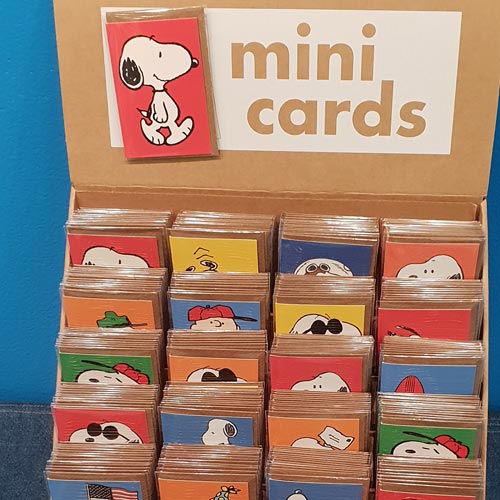
Snoopy also caught my eye on Cubic’s stand. It had developed a very stylish range including espresso sets and trinket trays. It has made good use of classic Schulz Peanuts artwork letting the original art ‘sell’ the product. It has chosen well and created a great range that manages to look fresh but remains classic.
It was also good to see it featuring artist Matt Sewell’s Birds on a new range. An endorsement for the commercial potential of art and illustration licensing particularly when, as in Matt Sewell’s case, the artwork is distinctive.
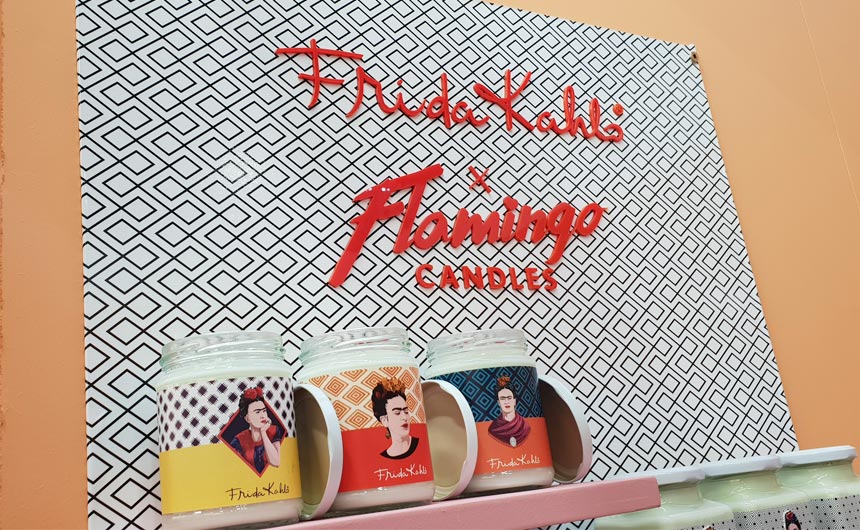
A final observation from Top Drawer was how heritage licences can provide licensees with an opportunity to offer the market distinct products in competitive categories.
Flamingo Candles was selling a range of Frida Kahlo candles. Here it is tapping into the heritage and style of a very distinctive artist. This has given it a point of difference in a market sector that is competitive and reinforced the gift potential of candles. An impetus for this licensing programme has been an art exhibition of Frida Kahlo’s work which has kickstarted renewed interest in her and exposed her work to a new generation of fans. By using this art, Flamingo has a product range that appeals to an audience that may have been difficult to reach otherwise.
Top Drawer is one of my favourite trade shows though it is difficult to switch back on my inner licensing agent at times as I walk the aisles imagining I am buying for my soon to be opened gift shop. Don’t panic I am not going into retail, but I think Top Drawer and the exhibitors should be applauded for creating a show that is well presented and engaging.
Clearly exhibitors will judge it in part by the value of orders taken. As mentioned earlier, retailers were placing orders for Nadiya’s range with Bliss which is an indicator that retailers are still buying and still placing orders.
It is easy to get despondent retail wise, but Top Drawer is a reminder that well presented products are still in demand and well chosen licences can create a point of difference. Perhaps we need to think a bit differently or maybe simply listen to more music while we work. Roll on Top Drawer – The Album.
Ian Downes runs Start Licensing, an independent brand licensing agency. His Twitter handle is @startlicensing – he would welcome your suggestions for what to look out for.






















